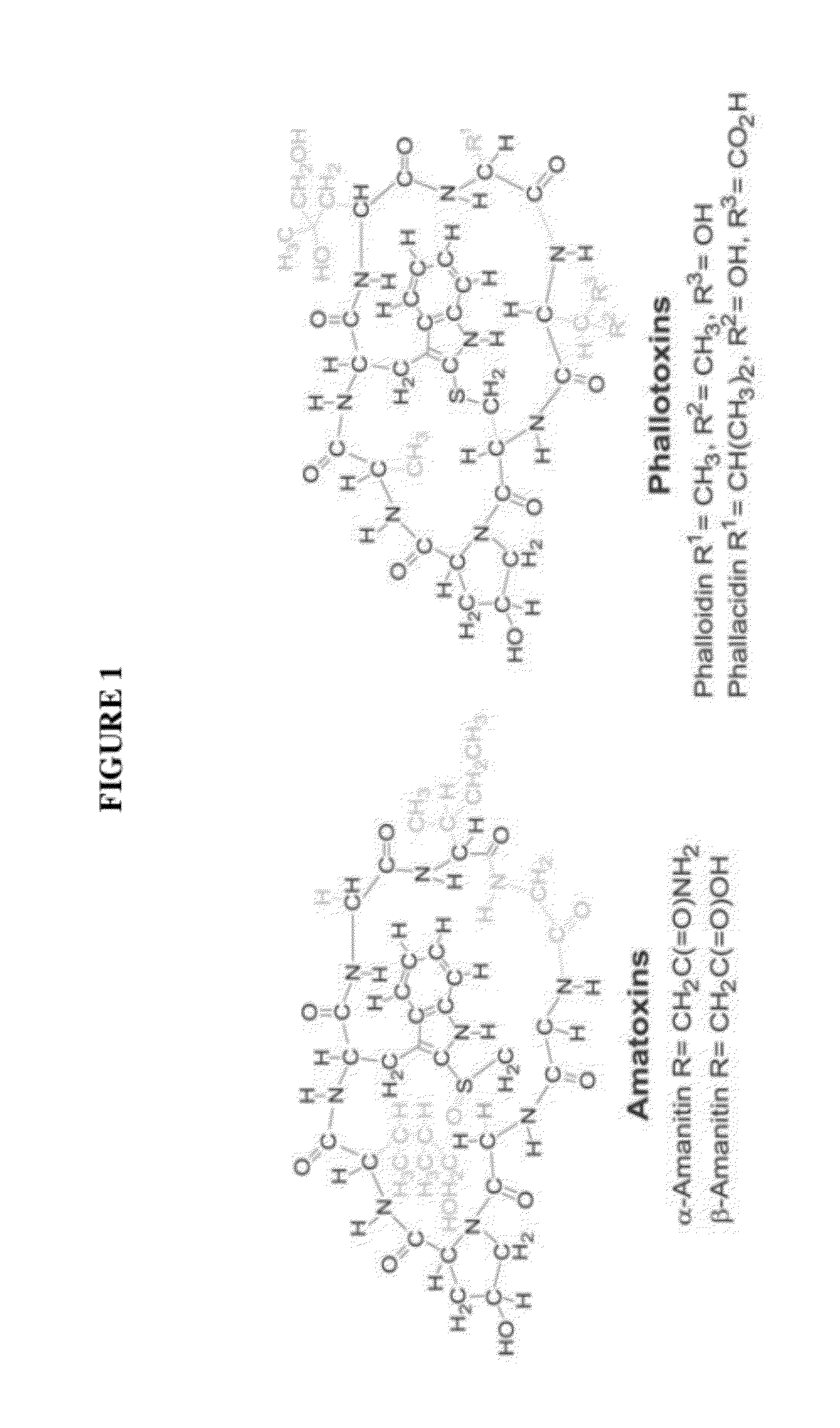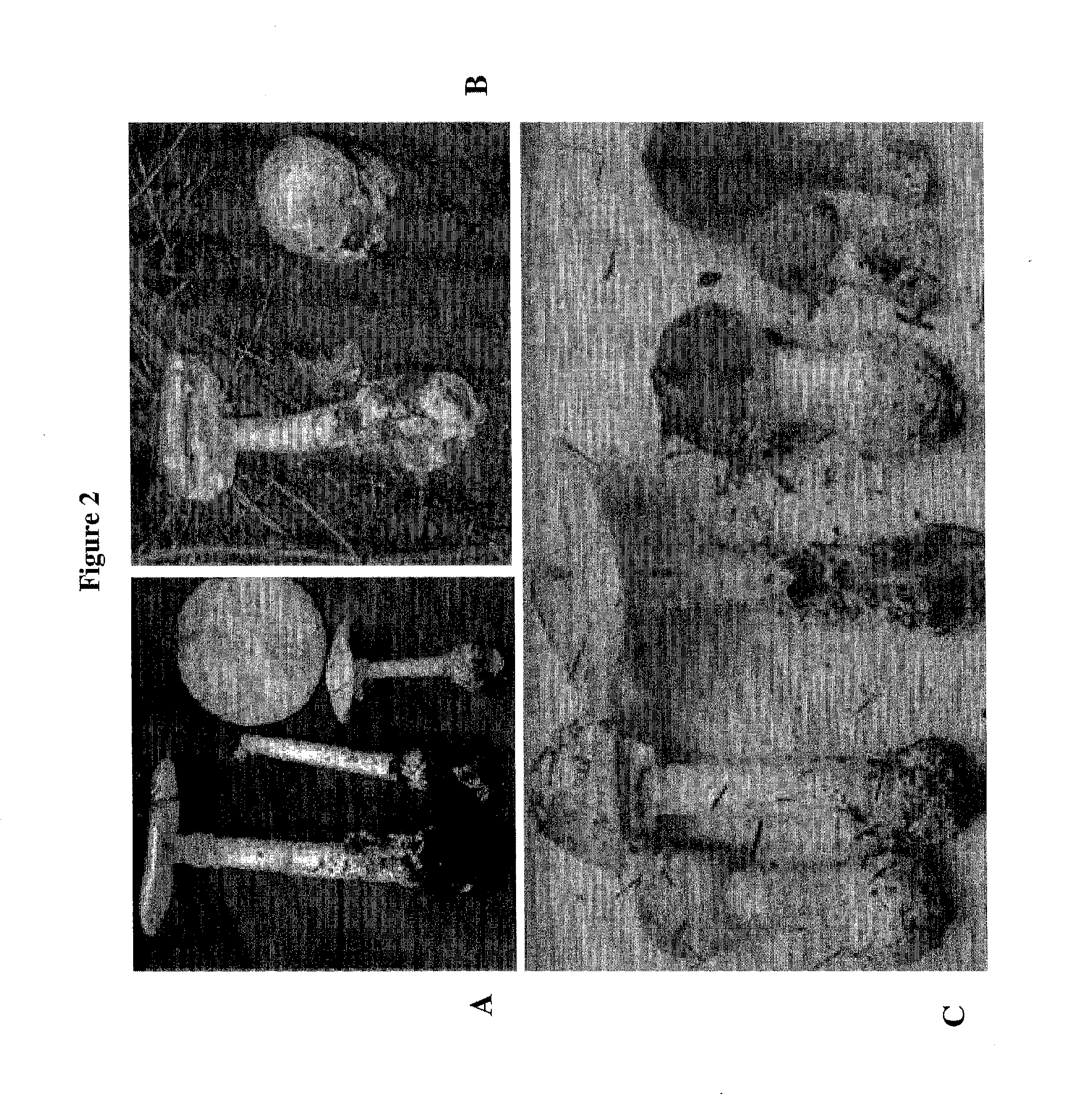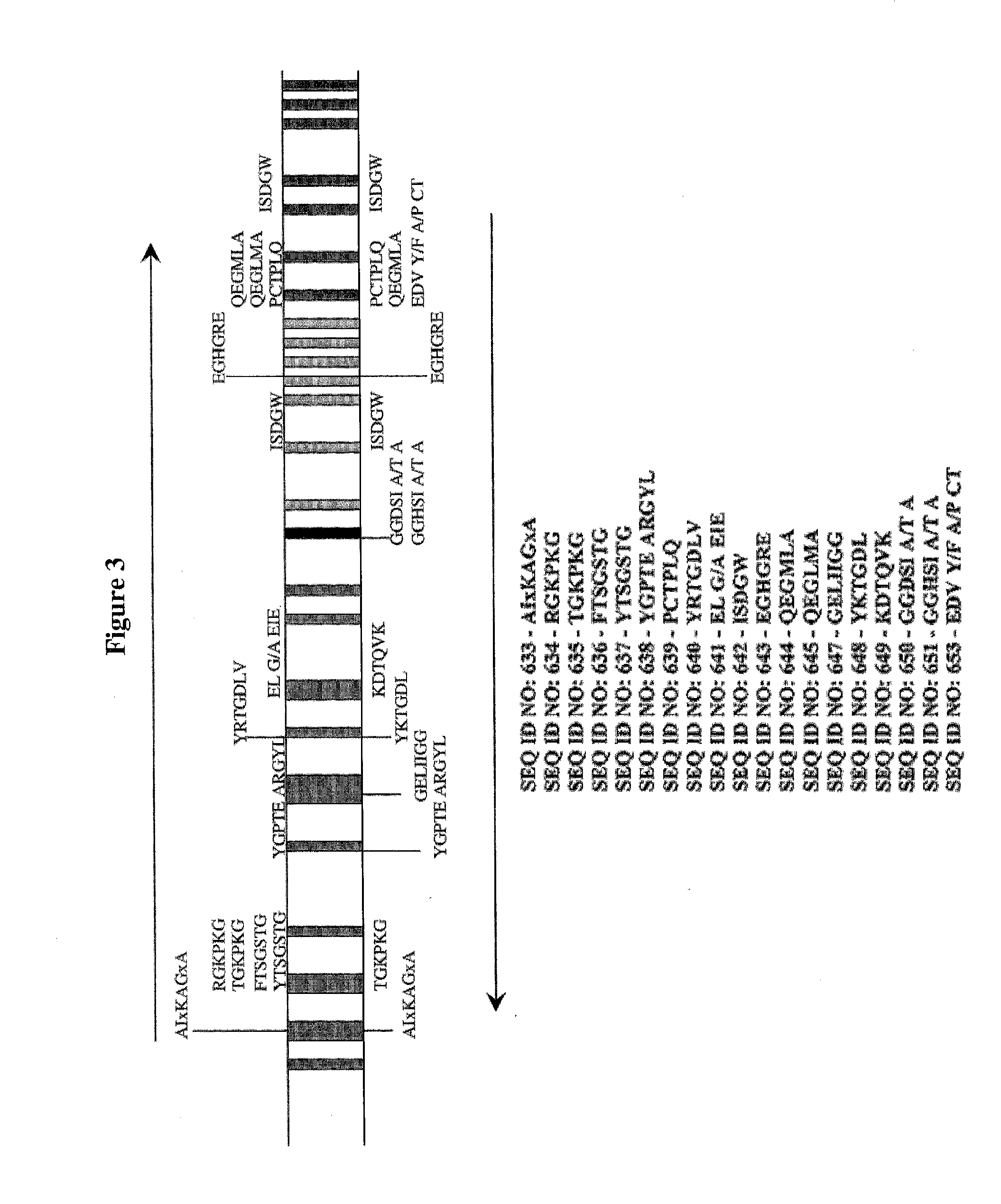Use Of Galerina Marginata Genes And Proteins For Peptide Production
a technology of galerina marginata and genes, applied in the field of genes and peptides, can solve the problems of limiting the availability of natural sources of galerina marginata peptides, and the amanita /i>species do not grow well
- Summary
- Abstract
- Description
- Claims
- Application Information
AI Technical Summary
Benefits of technology
Problems solved by technology
Method used
Image
Examples
example i
Materials and Methods
[0306]The following is a description of exemplary materials and methods that were used in subsequent Examples during the development of the present inventions.
[0307]A. Exemplary Mushroom Species of the Present Inventions (FIG. 2 and FIG. 31).
[0308]The inventors selected the genome of Amanita bisporigera to provide sequences of interest because of reports on consistently high, albeit somewhat variable, levels of amatoxins and phallotoxins within individual fruiting bodies combined with the relative ease of obtaining exemplary wild growing mushrooms by merely identifying and harvesting the mushrooms.
[0309]Exemplary Basic Molecular Biology Techniques.
[0310]The inventors developed and used the following exemplary materials and methods during the development of the present inventions. During the development of the present inventions the inventors were surprised to successfully clone cDNAs encoding toxin genes from mature mushrooms in addition to mushrooms in the butt...
example ii
[0333]This example describes exemplary methods for providing a fungal genomic library, specifically an Amanita spp., library.
[0334]The inventors initially contemplated the existence of an amatoxin synthetase gene that was a member of the class of enzyme known as nonribosomal peptide synthetases.
[0335]However after extensive unsuccessful attempts to obtain amatoxin synthetase genes or gene fragments through PCR-based techniques using isolated genomic DNA, see, Example III, and biochemical methods (such as, ATP-pyrophosphate exchange assay; amino acid feeding studies, etc.), the inventors subsequently initiated a shotgun genome sequencing project for obtaining genes of interest, such as genes associated with cyclized peptide production, toxin production, peptide encoding genes, toxin encoding genes, etc. One genomic library was generated by the Genomics Technology Support Facility at Michigan State University and one was generated by Macrogen, Inc. Each library yielded genomic fragmen...
example iii
[0341]This example describes the failure of the inventors to obtain a gene homologous to a fungal nonribosomal peptide synthetases (NRPSs) in Amanita bisporigera, which produces amatoxins, phallotoxins, and other putative Amanita peptide toxins. Details are shown in a poster entitled “Examining amatoxins: The Amanita Genome Project” Hallen Walton 159. The utility of the incomplete genome: the Amanita bisporigera genome project. Mar. 15-20, 2005 Asilomar Conference Center Pacific Grove Calif. Fungal Genetics Newsletter, Volume 52-Supplement XXIII FUNGAL GENETICS CONFERENCE; herein incorporated by reference.
[0342]Because known fungal cyclic peptides are biosynthesized by methods comprising nonribosomal peptide synthetases (NRPSs) (Walton, et al., in Advances in Fungal Biotechnology for Industry, Agriculture, and Medicine, et al., Eds. (Kluwer Academic / Plenum, New York, 2004, pp. 127-162; Finking, et al., (2004) Arum Rev Microbiol 58:453-488, all of which are herein incorporated by ref...
PUM
| Property | Measurement | Unit |
|---|---|---|
| Length | aaaaa | aaaaa |
Abstract
Description
Claims
Application Information
 Login to View More
Login to View More - R&D
- Intellectual Property
- Life Sciences
- Materials
- Tech Scout
- Unparalleled Data Quality
- Higher Quality Content
- 60% Fewer Hallucinations
Browse by: Latest US Patents, China's latest patents, Technical Efficacy Thesaurus, Application Domain, Technology Topic, Popular Technical Reports.
© 2025 PatSnap. All rights reserved.Legal|Privacy policy|Modern Slavery Act Transparency Statement|Sitemap|About US| Contact US: help@patsnap.com



